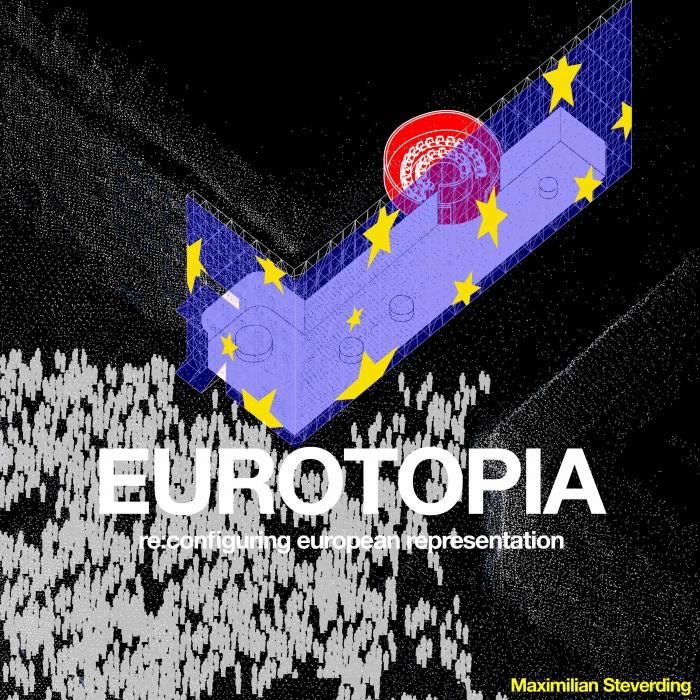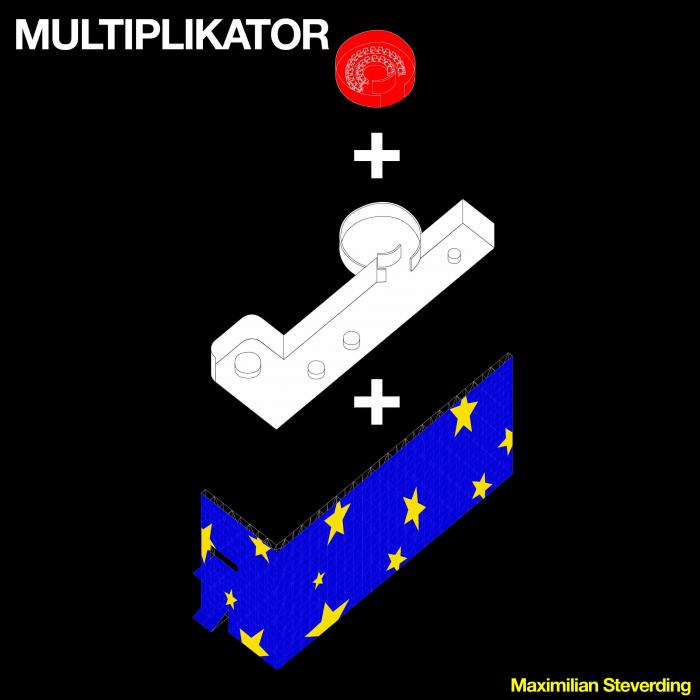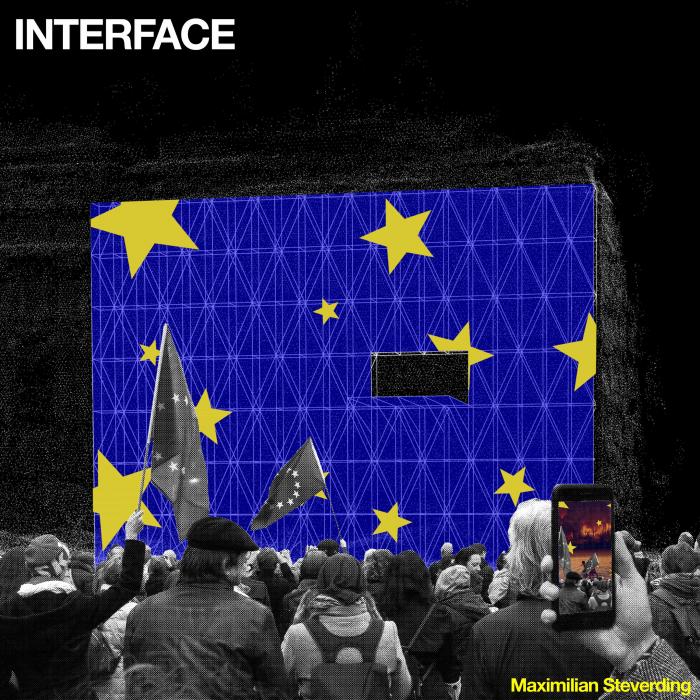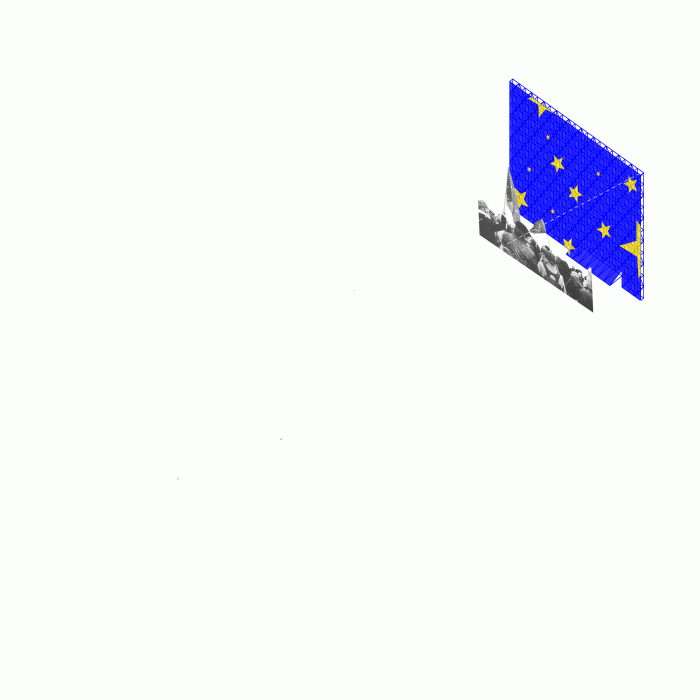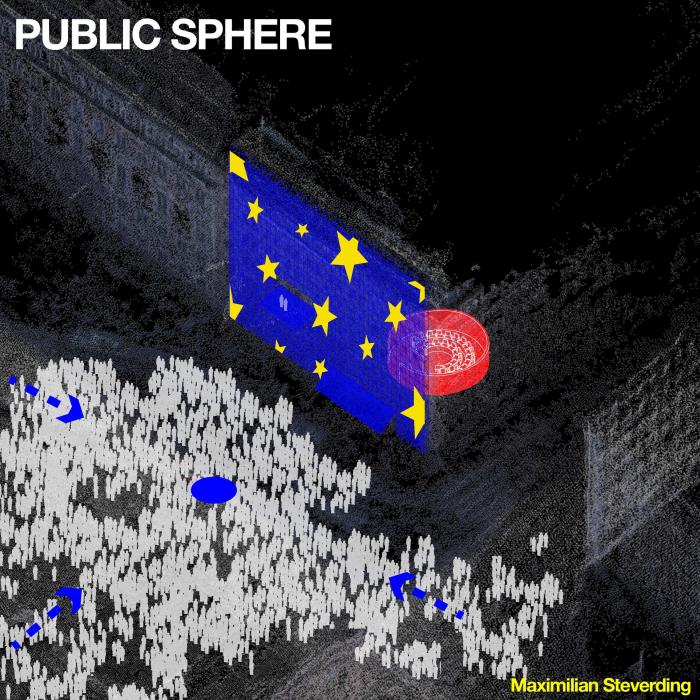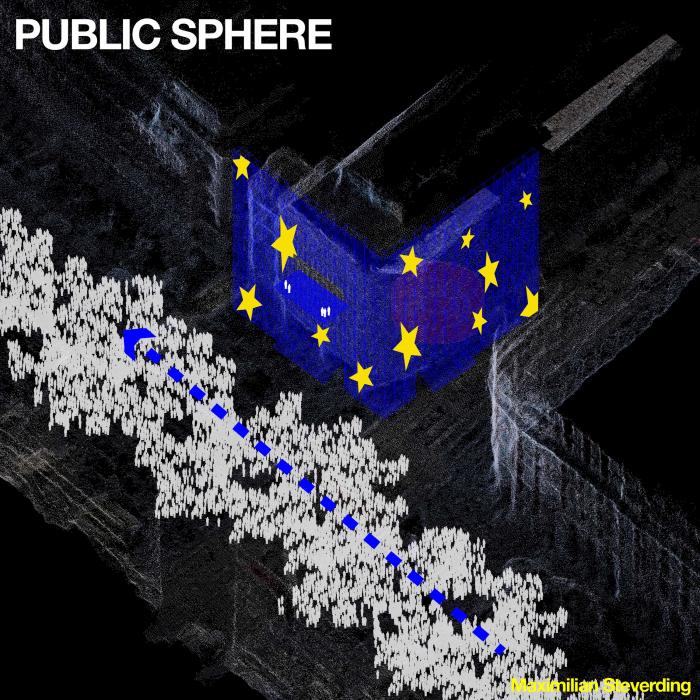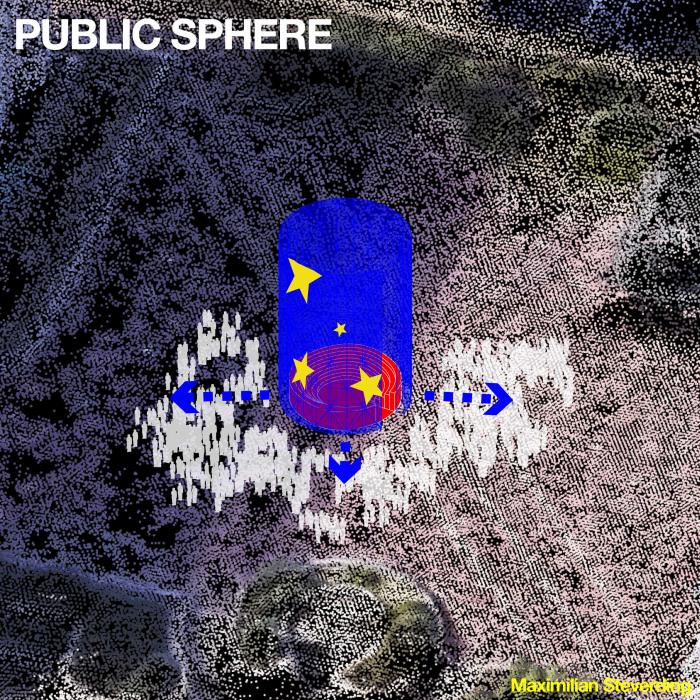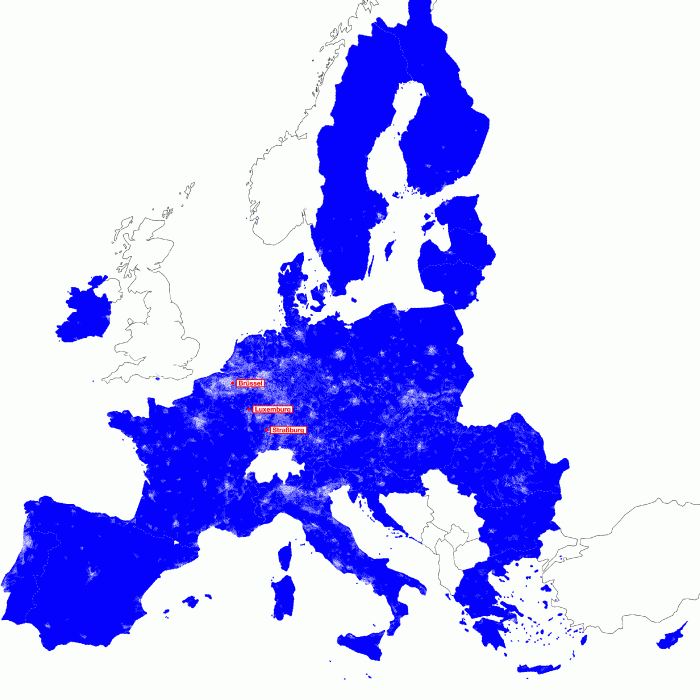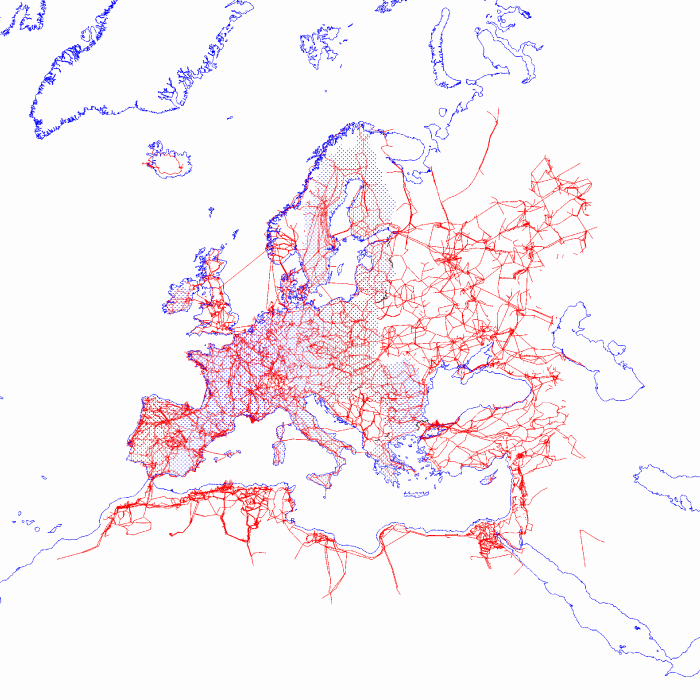I. SUMMARY INFORMATION
Project
269762
Status
Submitted
Award category
Reinvented places to meet and share
You want to submit
NEW EUROPEAN BAUHAUS RISING STARS : concepts or ideas submitted by young talents (aged 30 or less)
Project title
Eurotopia
Full concept/idea title
Eurotopia – reconfiguring european representation
Description
Representation of the EU is in despair – and with it its architecture. Transformative pressure of raising individualism and globalization is calling for Eurotopia, both research project and reconfiguration of European representation. It challenges the current status, driven by tales of old nation states, with the concept of a network representation that exceeds national boundaries to create connected identities by enabling political participation through build architecture.
Where is your concept/idea being developed or intended to be implemented in the EU?
Germany
Bavaria
Johann-Clanze-Straße 32
Munich
81369
II. DESCRIPTION OF THE PROJECT
Please provide a summary of your concept/ idea
Eurotopia is challenging the concept of representation via the example of the European Parliament, setting out to create a concept of political representational architecture for the 21st century. Eurotopia started as an in-depth analysis of the production of architecture for the European Parliament. Through interviews with architects, activists and MEPs as well as representatives of the administration of the EP, the complex process of a multilevel and network-like production of these architectures was dismantled. The underlying concepts oscillate between centralist ideas of the united states of europe with its main capital Brussels and the built reality of multiple parliament buildings and administrations in different cities as well as the newly developed Europe Experiences being rolled out all around europe. Eurotopia as a hypothesis of the representational architecture of the 21st century is thus challenging the former, the nation-state idea of a single identity, and is embracing the latter, european representational architecture as a platform for citizen empowerment. Creating a unified european identity not through homogenizing european culture but through a shared plattform as a tool of expression and exchange between the ever extending and shrinking union. The architecture that evolves form such an approach is contrasting the mighty expression of classical political architecture. Taking the concept of the already existing Europe Experiences of the Parliament and the Commission, these spaces of consumption are enhanced through infrastructure of communication that is transforming already known elements of parliamentary architecture into anticipatable surfaces. This infrastructure is deconstructing capitals into nodes in a network-space thus altering spatial organization that is underlaying both political design and architectural design. Eurotopia is reconfiguring architecture form the representation of power to the empowerment of citizens through representaton.
Please give information about the key objectives of your concept/idea in terms of sustainability and how these would be met
The concept of Eurotopia developed out of the question whether political institutions, apart from their functional requirements, are in need of architectural icons, namely starchitecture, to produce public identification with these institutions. The question of strategy in developing resilient and future-proof representational architecture is strongly linked to sustainability. The European Parliaments six buildings are a prime example as they are still not meeting todays requirements especially concerning identification features.
Eurotopia as claiming, that in following the already outdated concept of iconized architecture, political institutions are rivaling with other brand-making entities such as cities or international companies. Although coming from a different background political institutions would thus need to compete in the very resource demanding strive for global attention or their efforts would be in vain.
Eurotopia is not only sustainable in saving resources of construction, because it uses already existing architecture in minimally invasive interventions to enhance the capabilities of the already existing Europe Experiences. It is also sustainable in its strategy as it is strongly linked not only to architectural theory but also to contemporary political and sociological observations.
Representational architecture in its build form is the materialization of political decisions and orientation, carved into stone for decades. Thus sticking to both aesthetics and spatial strategies, evolved from the almost outdated concept of nation-states in a time of rapid globalization, is unsustainable. Eurotopia is embracing the spatial strategies of network organization of the 21st century while empowering the citizens of e urope to create a resilient and both ecologically and politically sustainable representational architecture not only preparing for but building the future.
Please give information about the key objectives of your concept/idea in terms of aesthetics and quality of experience beyond functionality and how these would be met
In shaping the identities of its associating citizens, the features of representational architecture such as aesthetics and experience are strongly linked to its functionalities because their main premise is to create an artefact of identification either through its object-features of through spatial experience.
Nevertheless the identificational features determining aesthetics and experience can be and are in todays practice e.g. at the European Parliament dissected from the functionalities of political processes as many functional conflicts would arise from the overlapping of both.
Eurotopia is taking this development into account when distributing the political experience of the EP into the fastness of the European Union. Its architectural features need to be understood as an architectural assemblage, mixing the local existing architecture of the member-states cities with the already existing aesthetics of the Europe Experiences and its own additions, creating an authentic image of “united in diversity”. The ephemeral character, especially of the super-sign on the outside of the buildings, is hinting both on the ephemeral character of the EU as well as on the aesthetical concept of assembling rather than creating, underlining the procedural character of identity expressed through architecture.
The procedural character is also inherited within the modifications of the european flag that makes up the cloth draping over the Europe Experiences. Through a playful interpretation of classically democratic architectural categories such as the notion of transparency, the visitor is empowered to alter the architecture digitally creating new forms of adaptable, anticipatable and digitally augmentable architecture. Architecture becomes both a tool and an actor in the experience of the citizens. Rather than designing architecture that represents, architecture becomes a tool of empowerment and by pipelining the created images digitally, also becomes both place and network.
Please give information about the key objectives of your concept/idea in terms of inclusion and how these would be been met
The concept of Eurotopia is to transcend the european capitals, questioning existing stereotypes, exclusions and limitations that are based on borders, national identities as well as suppressive political power. Therefore a platform representation, with architecture as both its multiplier and tool, enables everyone to participate in political processes through designed pipelines. By being present in the everyday surroundings of people, representation becomes self-representation, giving a voice to those formerly unheard.
In making it adaptable by the public, the elements can be reproduced by citizens, enabling them to create their own node in the network of representational spaces broadening the reach of the system. Through the growth of this communication-system a decentralized european public space is created that is both virtually and locally accessible. By making the system open for expansion, people can integrate themselves into the political debates being held within this european public space, that are affected but not represented by the political system of the EU. Eurotopia extends the overlaying idea of european integration and inclusion beyond national borders. People would not only be represented within the borders of the European Union but could also be present in former european countries as well as EU candidates, associated countries or places that are having a strong relationship to the european continent.
In this system, architecture is the local materialization of a virtual and digital network of places in the european space. Just like privatized social networks it becomes a place for Europe wide discussions without the economic but with a democratic background. By also implementing these spaces within the urban space, access for people to a european network can be guaranteed that do not have access to digital networks.
Please explain the innovative character of your concept/ idea
While incorporating contemporary theory from the fields of architecture, political science and sociology as well as both history and contemporary development of the representational architecture of the European Union, Eurotopia embodies an innovative concept of architectural representation. In both its architectural form and in its spatial distribution it questions existing positions of political architecture criticizing the demand on resources that are linked to building mighty representations, linked but not only limited to the field of political architecture.
Eurotopia is a development of the digital aera, combining the advantages of virtual and real spaces to merge them in one multitude. Its architectural elements can better be described as hacks of already existing architecture turning them into multipliers of the transformation. Furthermore the aesthetics question the role of both architect and visitor. The architect is not designing a constant state of the construction but sets the frame in which visitors can work with the structure, embracing the unpredicted.
Therefore Eurotopia imagines new public spaces, anchored in the urban environment and linked through the digital environment, unleashing the potential of architecture as a tool and medium of communication in the digital era.
While in the 1950s the foundations for the European Union were laid, Eurotopia claims, that the 2020s should be the decade in which its supranational character be materialized through architecture, revolutionizing the way in which we understand and participate in politics and its spatial organization.
Please detail the plans you have for the further development, promotion and/or implementation of your concept/idea, with a particular attention to the initiatives to be taken before May 2022
In April 2021 the project passed the conceptual phase. The further ambitions of this project are to generate a public interest and finding partners to establish prototypes of structures for the european public space in several european cities, already starting to hack national public space with these interventions. Getting on board partners form the field of technology should further boost the project concerning the digital connectedness of the intervention.
While discussing both the concrete prototypes as well as the theoretical concept of an alternative european representation through architecture as an identificatory element, publishing the project should feed the discussions of further european integration as well as european identity. Broadening the scope of this discussion beyond the borders of the EU, pressing problems could be channeled through this discussion.
Furthermore the project will be distributed both to parliament representatives, administration and the liaison offices of the parliament in order to evoke a discussion and to initiate change. During summer of 2021 the concept will also be presented to activists and politicians shaping the Conference on the future of Europe, as this conference but be a prime start for such an european public space.
III. UPLOAD PICTURES
IV. VALIDATION
By ticking this box, you declare that all the information provided in this form is factually correct, that the proposed concept/idea has not been proposed for the New European Bauhaus Rising Stars Awards more than once in the same category.
Yes
